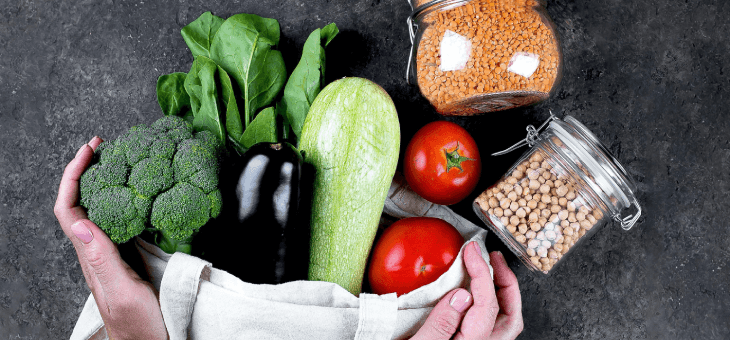Zero waste – it’s a hard target to reach for the millions of vegetable growers around the country. Many end up with gluts of produce every year, and find disposing of plastic compost bags and plant pots tricky.
However, urban gardener and seasoned vegie grower Cinead McTernan has found some ways to at least encourage zero waste.
Read: Why and how to use the whole vegetable when cooking
“Zero waste falls in two areas. You can think about what you’re buying, such as pots, how you are buying compost and that sort of thing; then you can think about what you are growing that will give you no waste because you can eat the whole thing, including the roots and the tips.”
Ms McTernan, who explains her strategies in her new book, City Veg, offers the following top tips towards zero waste vegetable growing.
1. Invest in things you can reuse
“You’ll want to reuse plastic pots and think about the items you generally put into the recycling. Is the plastic you throw away a good enough size to sow seeds in, for instance?”
2. Consider compost
“In an ideal world you would make your own compost, but if you have a small kitchen garden that’s going to be unlikely. So, think about buying compost with a group of friends. Alternatively, in garden centres you can buy compost that comes in recyclable bags.”
3. Refill your plant food
“In some places, you can now buy plant food in the way you would buy cereals and nuts, in a refillable container. Keep an eye out in your local garden centre for this. Big suppliers are looking to move towards this, so in the next year or two you will be getting dispensable units in garden centres where you just push like you would milk, getting your plant food in a litre carton and paying for it accordingly.”
4. Research sundries
“You can buy really good compostable bin bags for collecting garden waste, reusable bags for compost, mulch and soil conditioners and paper pots instead of plastic ones.”
Read: How to grow vegies in containers
5. Use veg ends you might otherwise bin
“There are some really good crops you can grow where you can eat everything. Carrots are great. You can grow them, eat the root and the leafy tops, making a pesto with it. And once you’ve taken the leafy top off and eaten the root, the bit that is left on the plate can be regrown to give you more leafy top.
“It won’t feed a family for a week but it will give you a bit of extra taste for your salad, but you can also show the kids that it’s great to keep reusing things. We’ve got to be thrifty and that message is going to become more important.
“Radish is another great veg, with its root and peppery leaves. If you don’t pick them, you get rat’s tail radishes that are delicious little pods, which are really tasty. That way, you have used the complete vegetable.
“Coriander is another good one. We are used to using the leaves but use the stems, too. Also, the roots – which have a milder taste – can also be used once the plant has gone over,” says Ms McTernan.
6. Put spare produce on your front garden wall
“Pop spare crops on your front doorstep or take them to a school fair and swap them there. And if you have in-date sealed packets of seeds, take them to your local school or leave them on your wall for someone to take.”
7. Don’t ditch crops that you think have failed
“Often, people think if their potatoes have started to sprout, they should throw them away. That is not the case. Just cut out the eyes. And don’t chuck green tomatoes, make chutney out of them. Just understand seasonality and the need to be frugal. Crop all those zucchinis and make chutney with them. I often grate them, to give them a creamy texture to things without overpowering the taste. Make ratatouille and freeze it. Do a bit of research on your crops and you will find most things can be eaten.”
Read: How to use vertical space to grow edibles in a small garden
8. Share seeds
“To avoid gluts of lettuces, green beans and carrots, which you’re never going to be able to get through, share packets of seeds with gardening neighbours and friends. Alternatively, use plug plants if you are really short of space, and just have one or two of what you want.
“Also, plan ahead. Successional sowing is great because if you sow, for instance, lettuces every couple of weeks, they will mature at slightly staggered times.”
Ms McTernan understands you may not be able to adopt zero waste strategies all in one go.
“Remember, all of this takes time, space and money, so do what you can – and if you can’t do everything, don’t feel like you’re failing.”
City Veg by Cinead McTernan is published by Bloomsbury, available now.
– With PA
If you enjoy our content, don’t keep it to yourself. Share our free eNews with your friends and encourage them to sign up.

